Stories of the Torn Swaddling Cloth
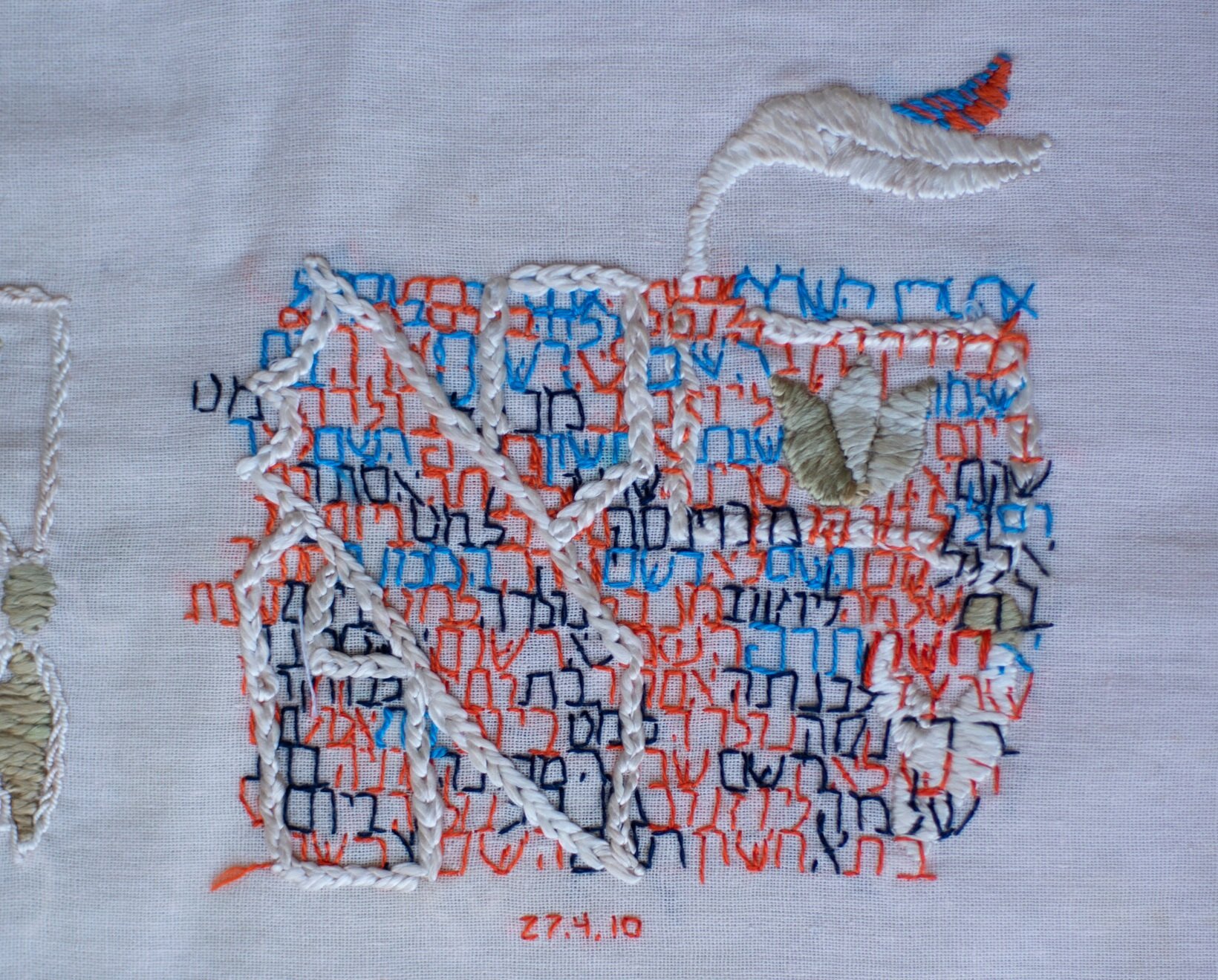


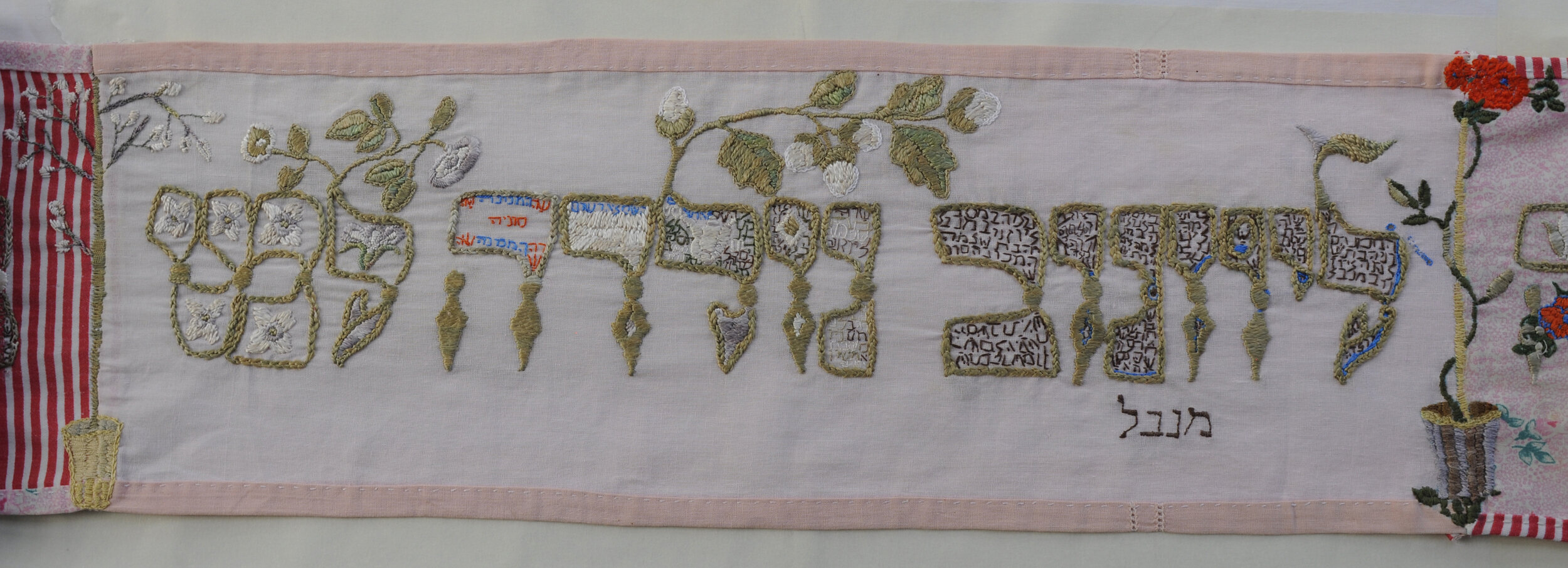

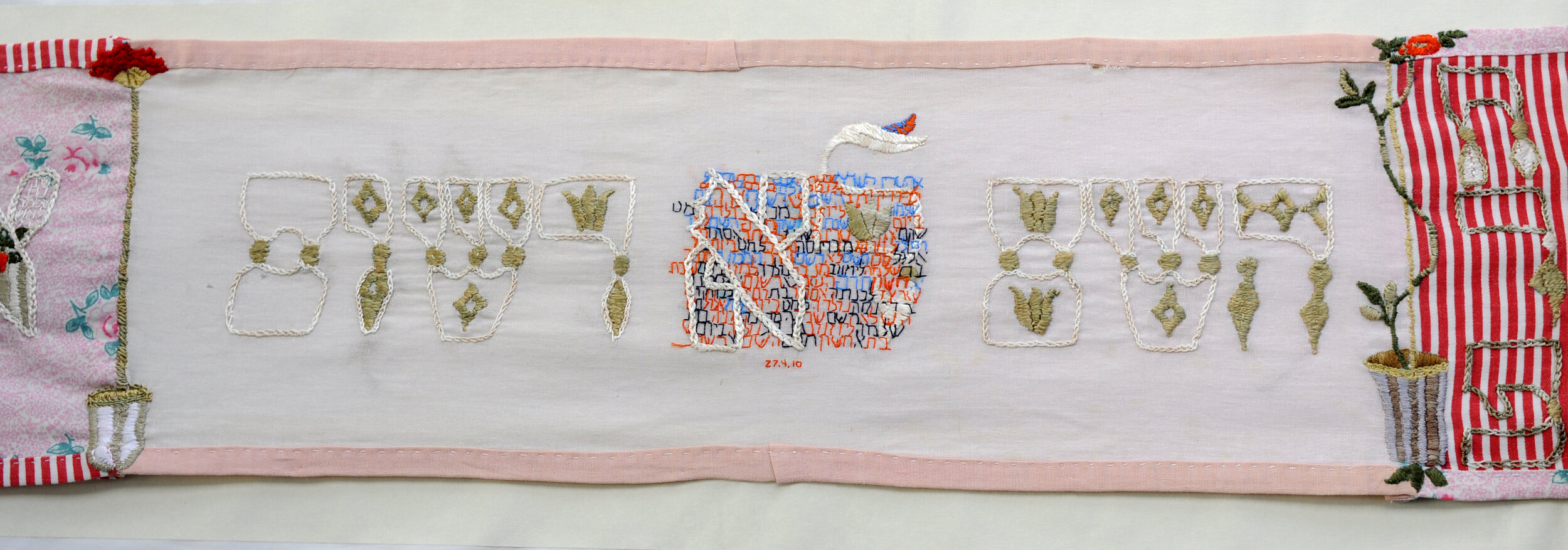


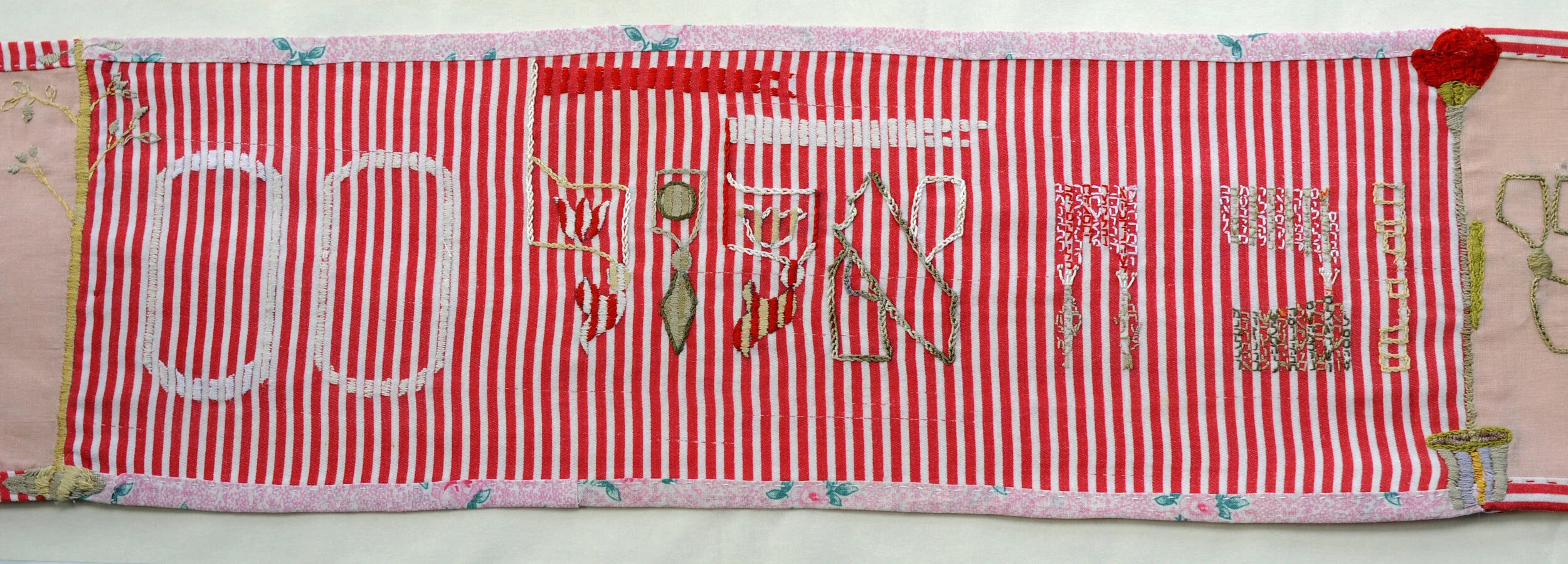
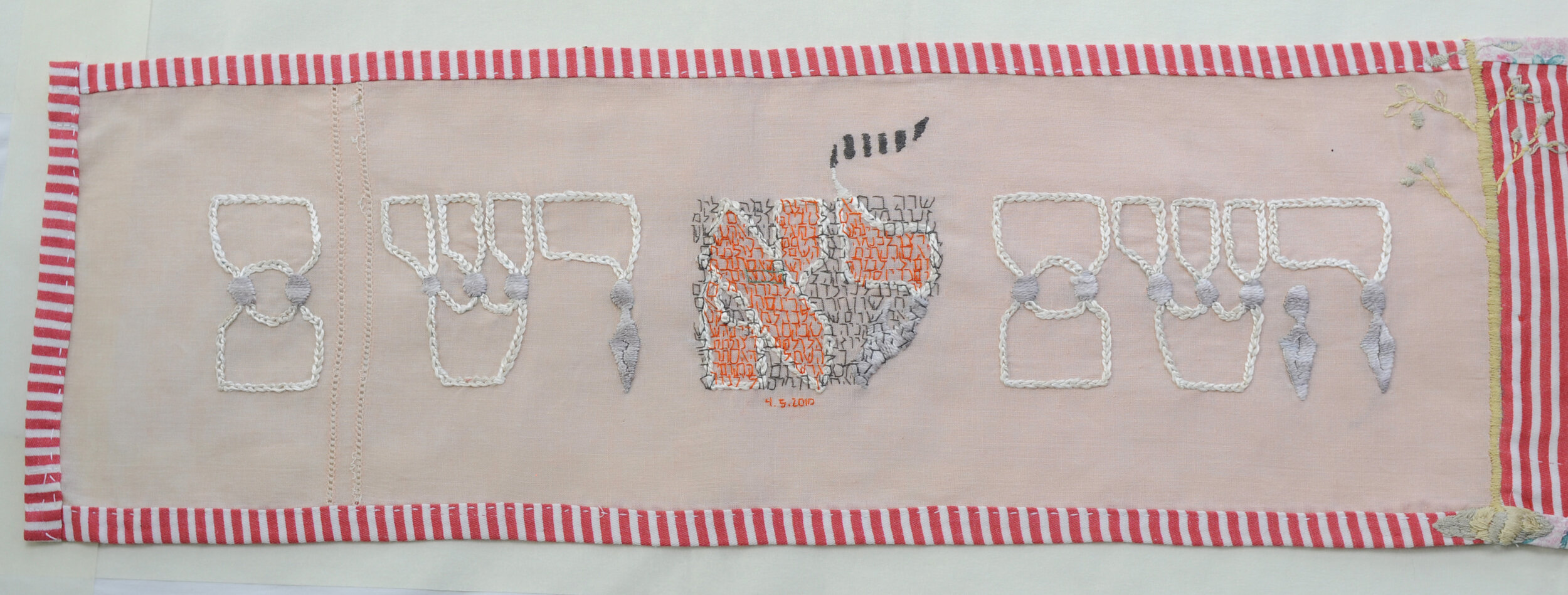
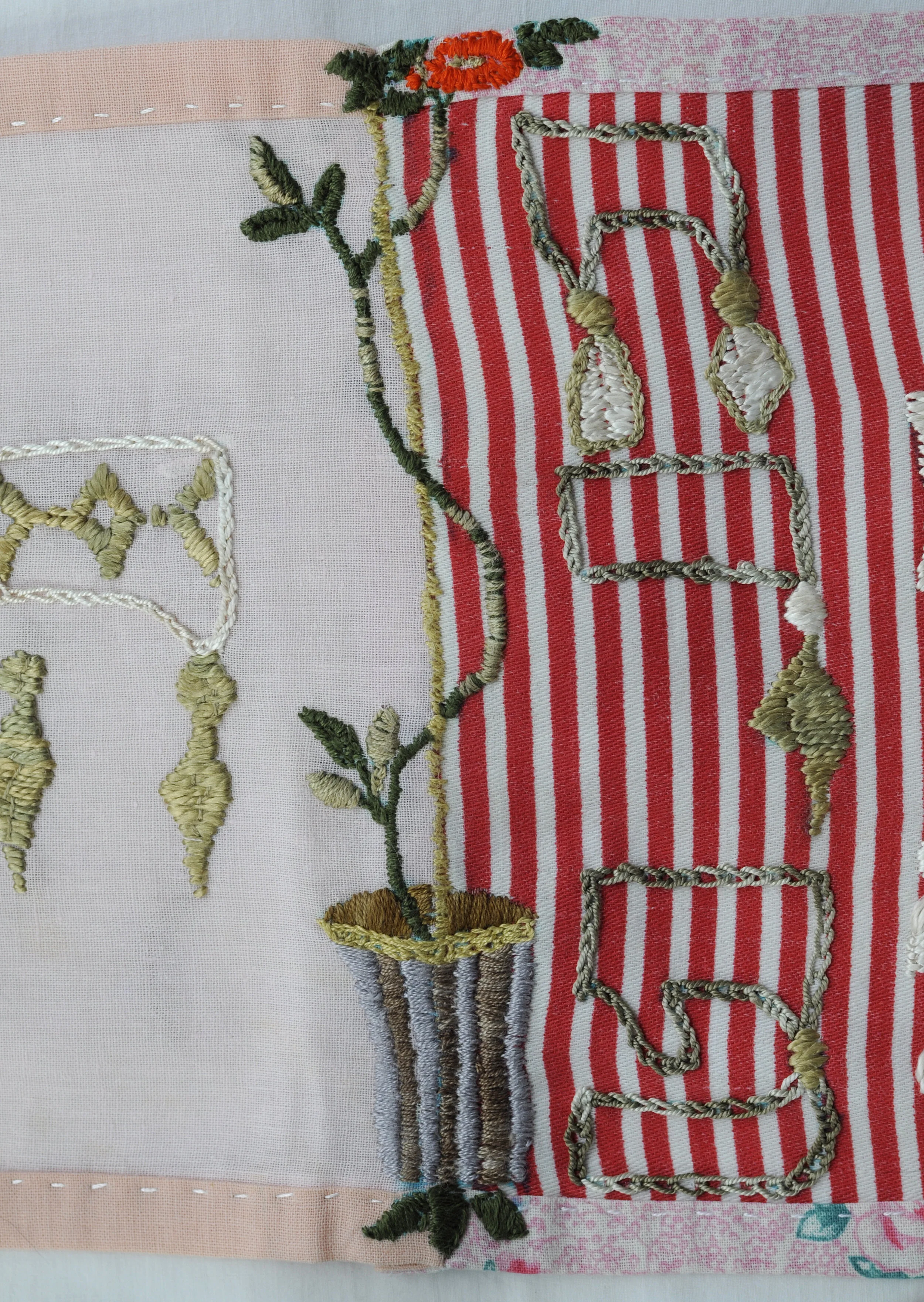
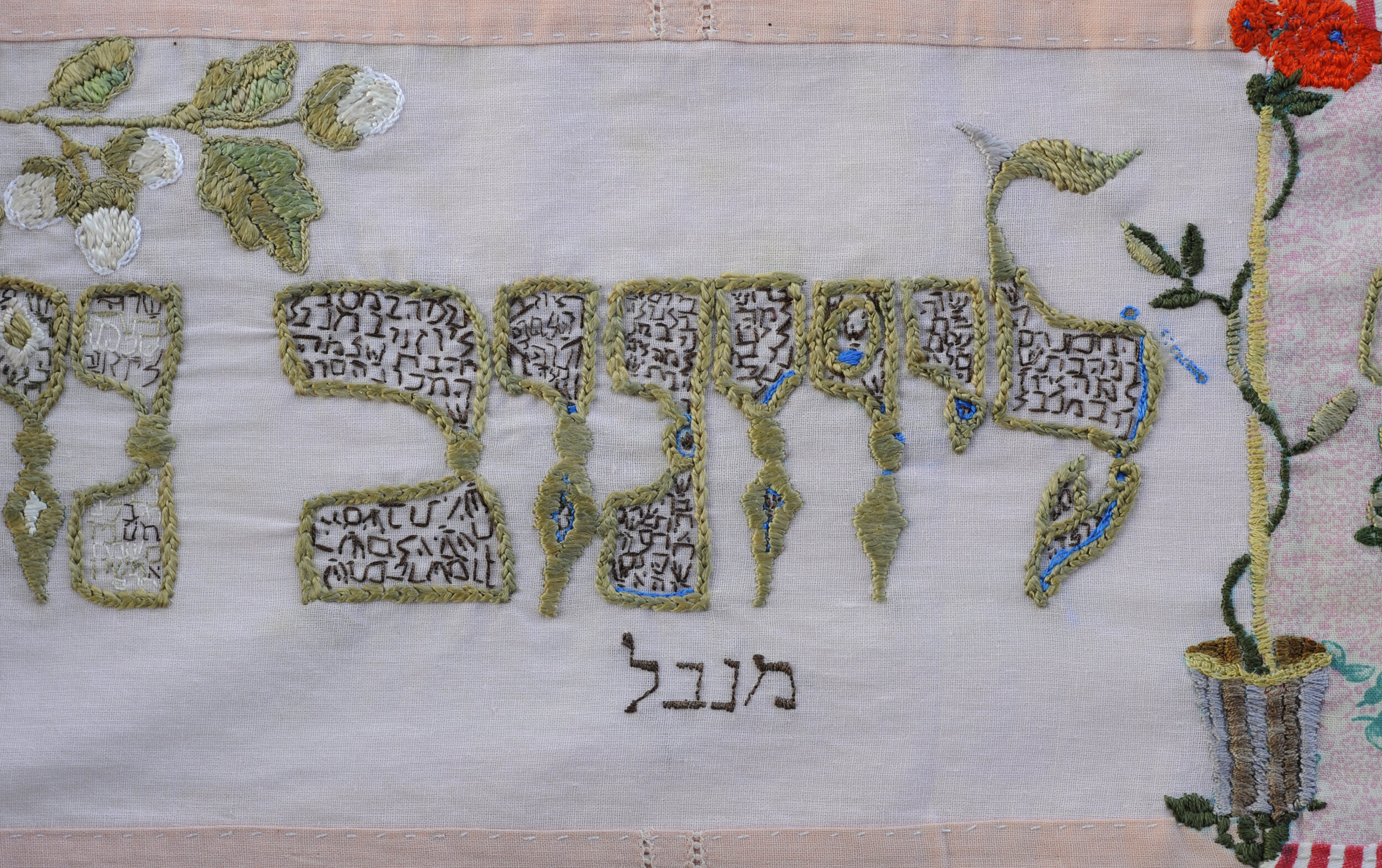
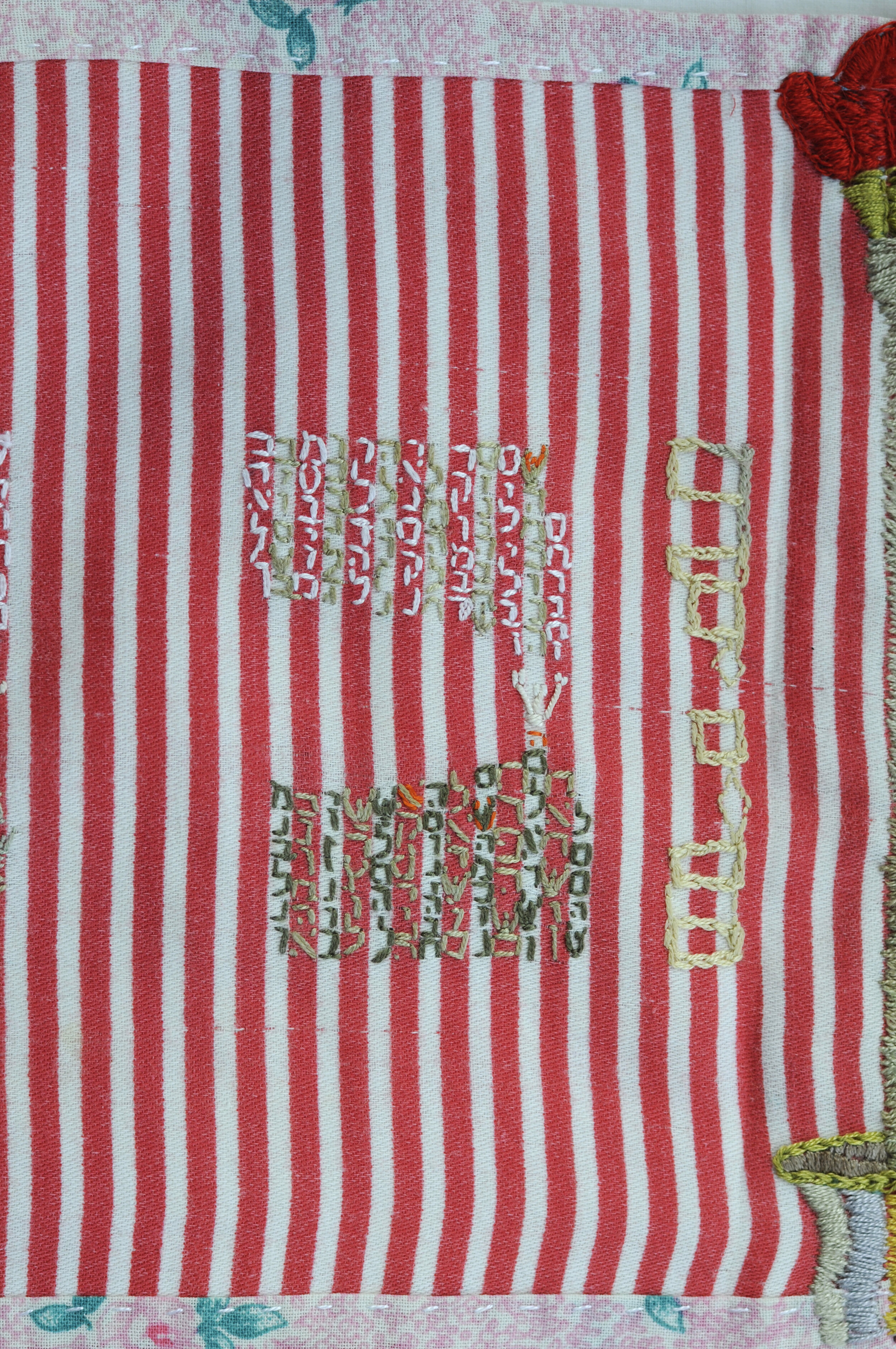
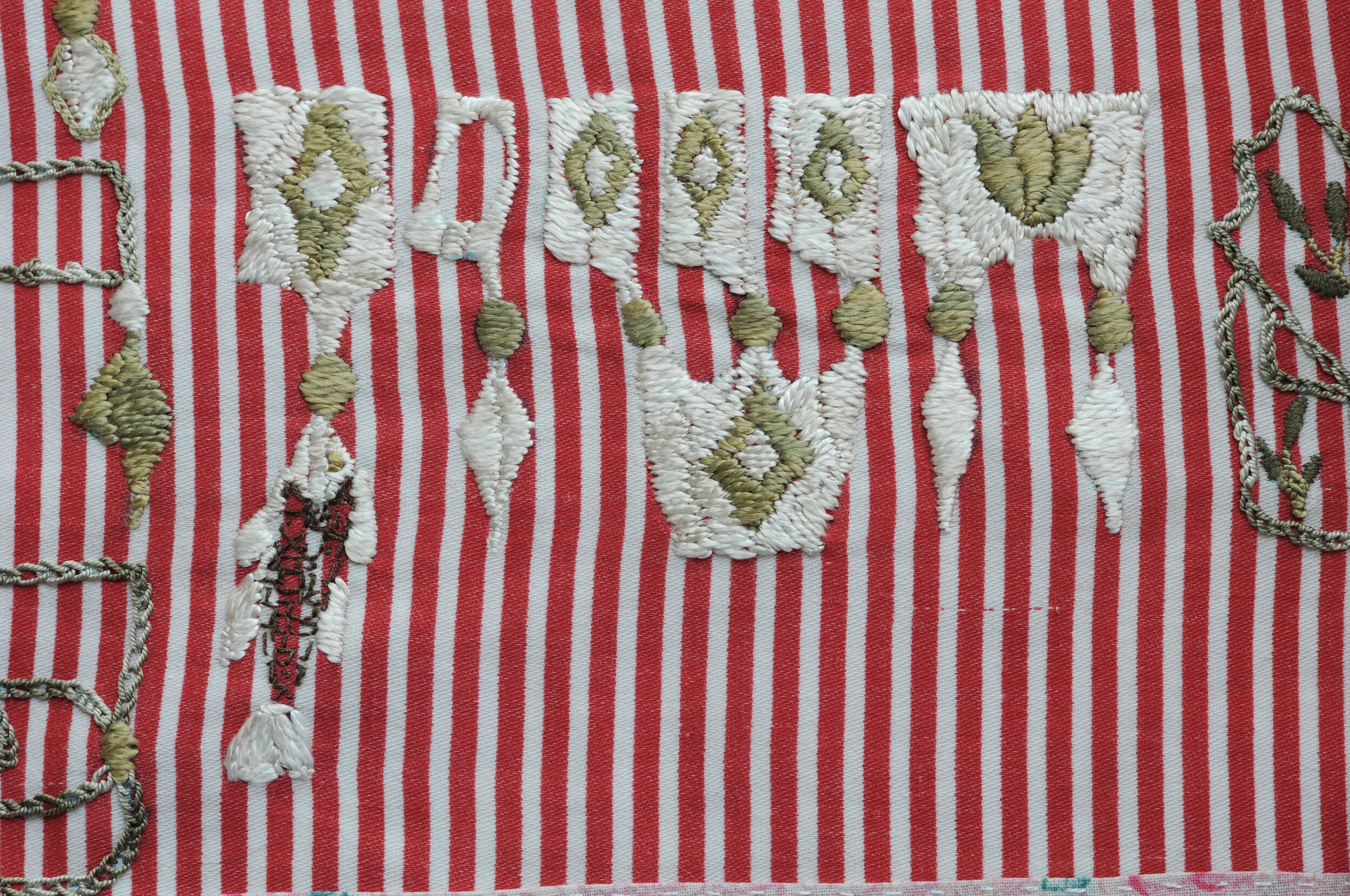
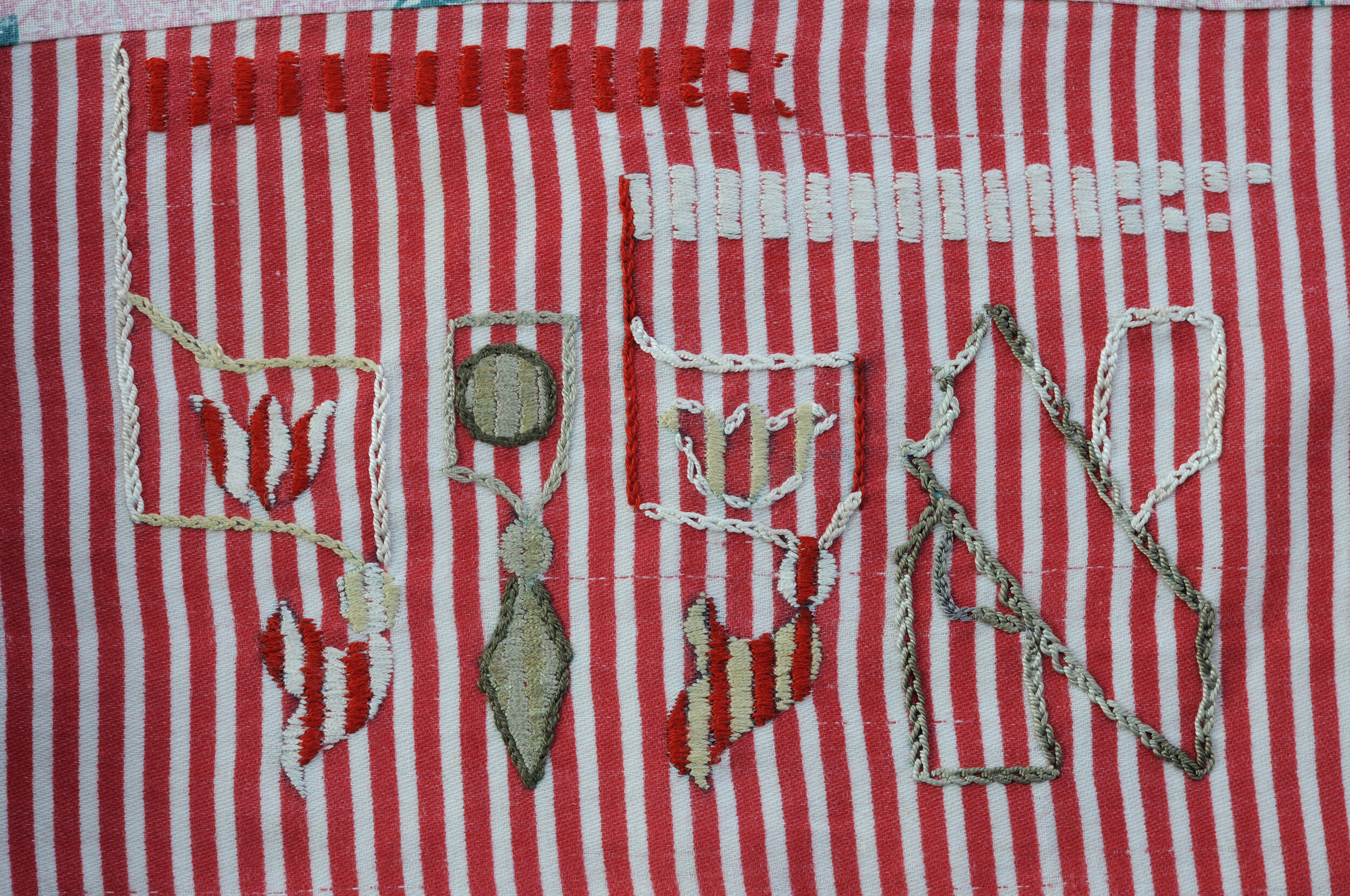
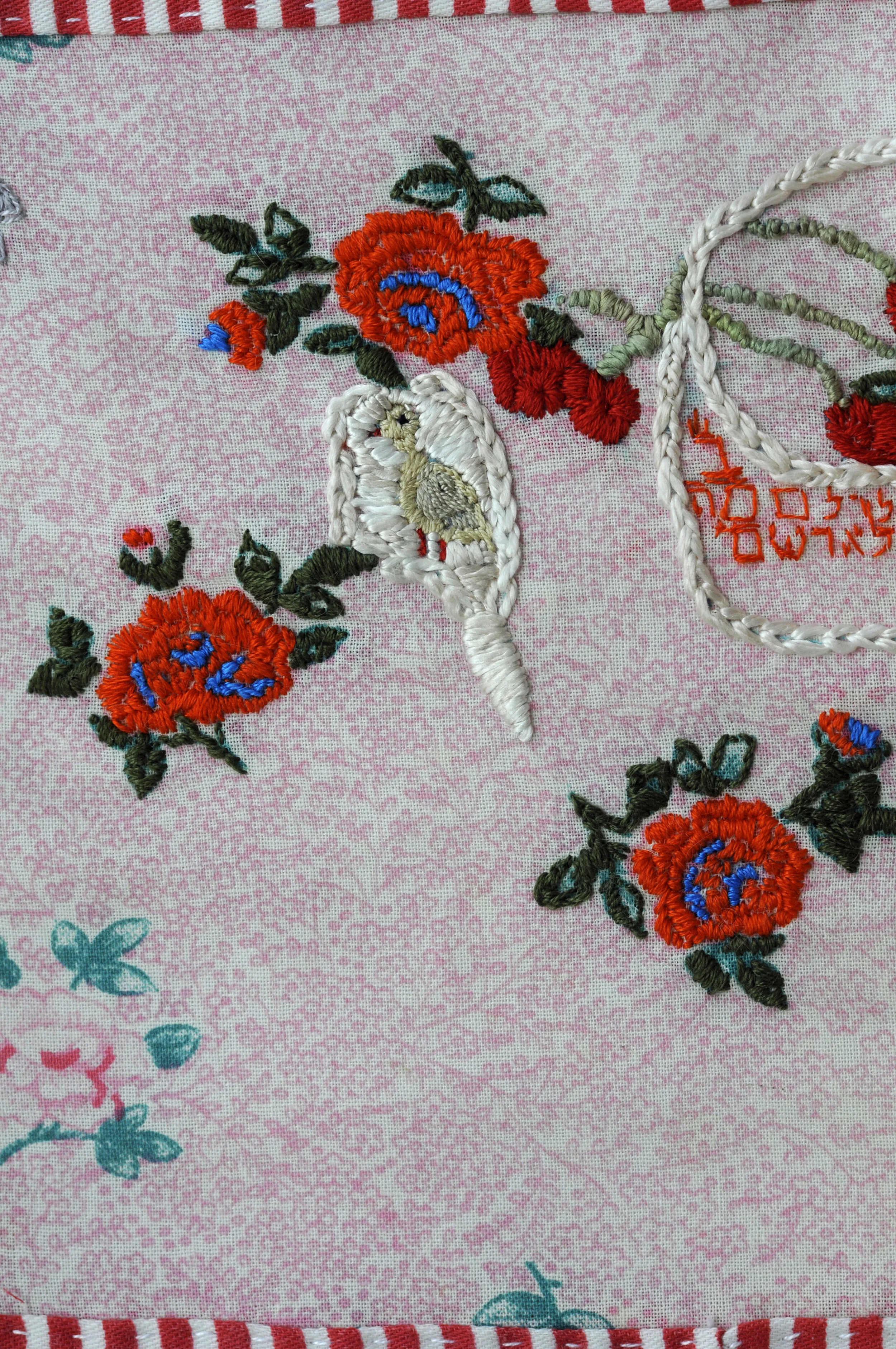
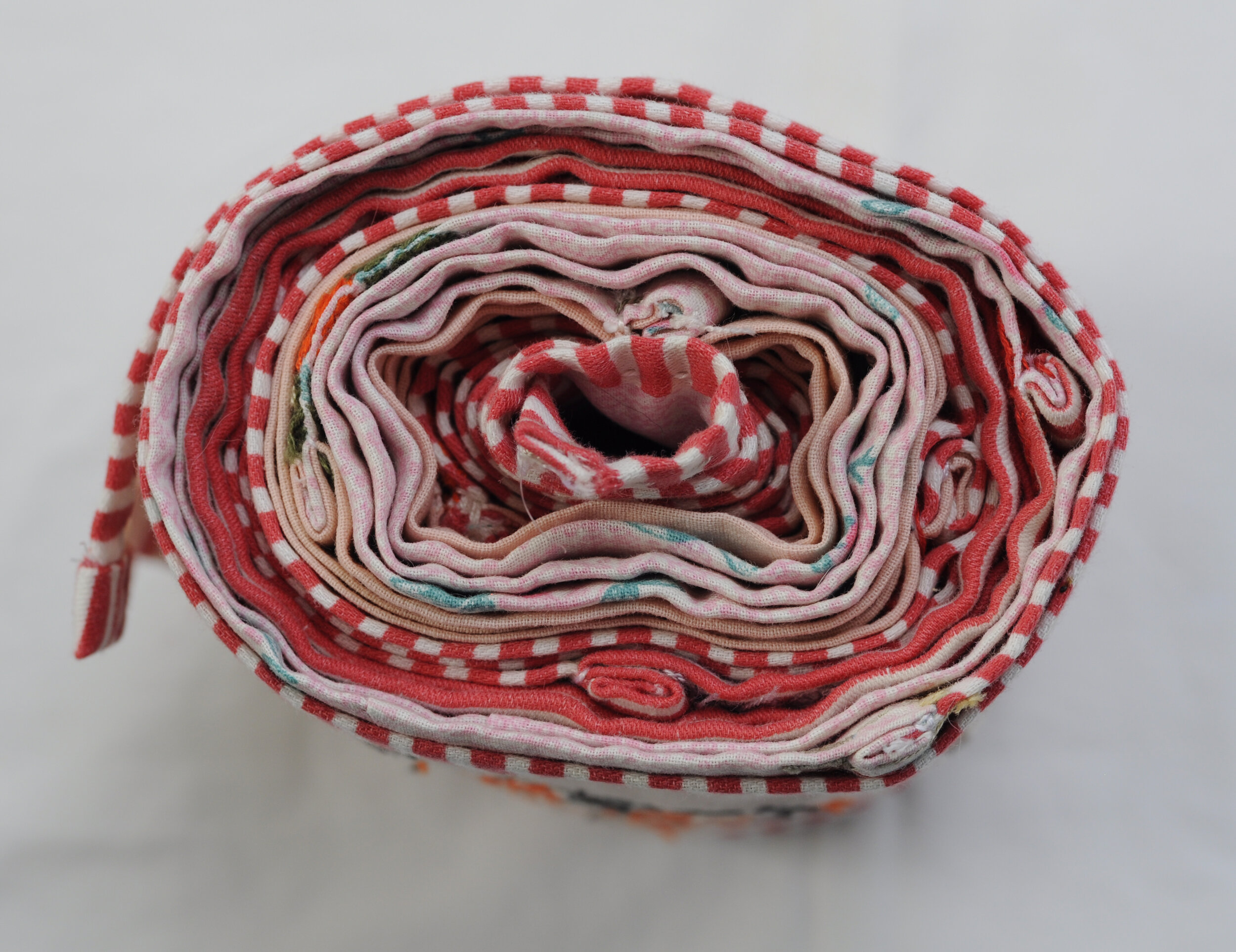
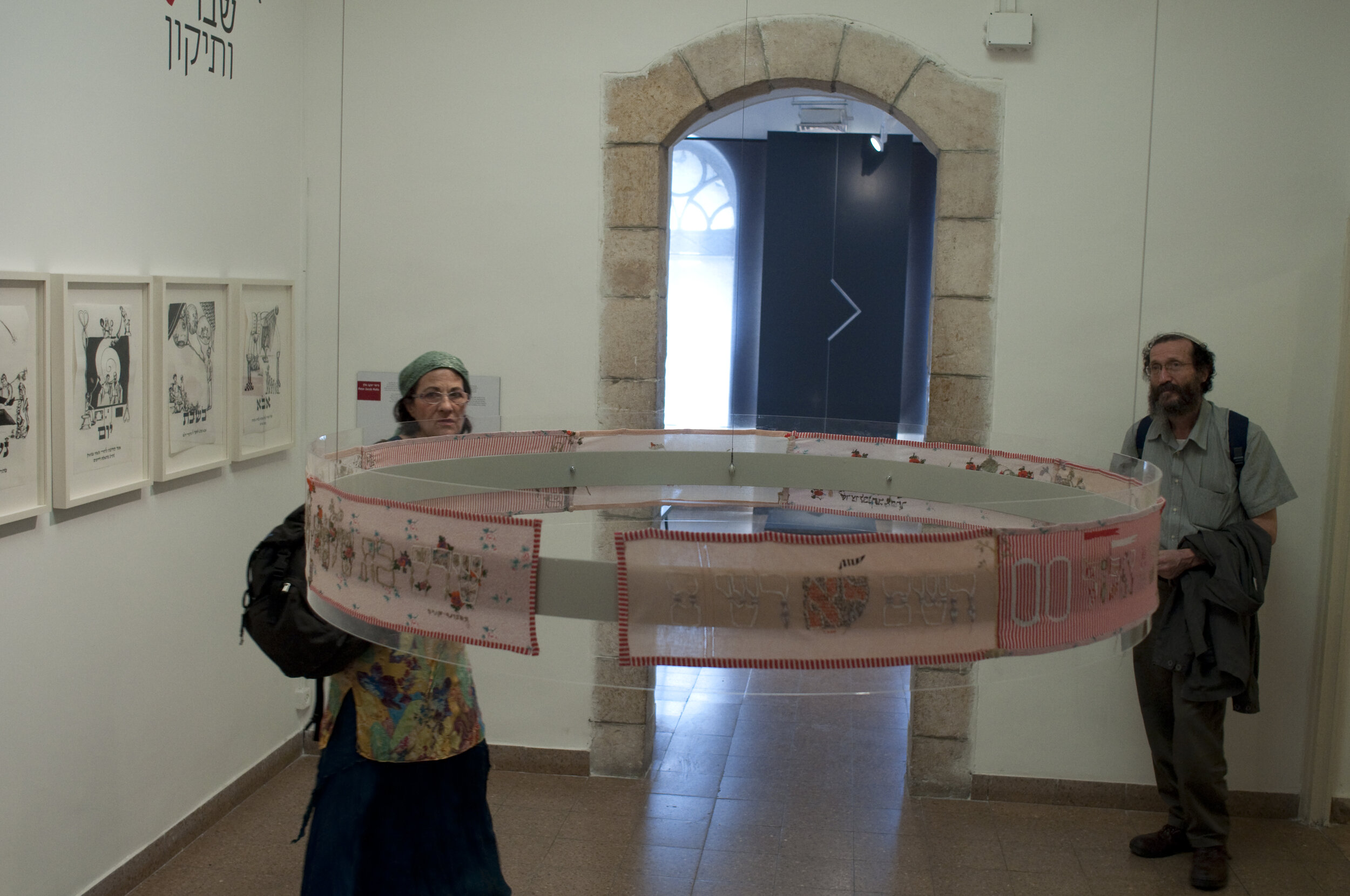

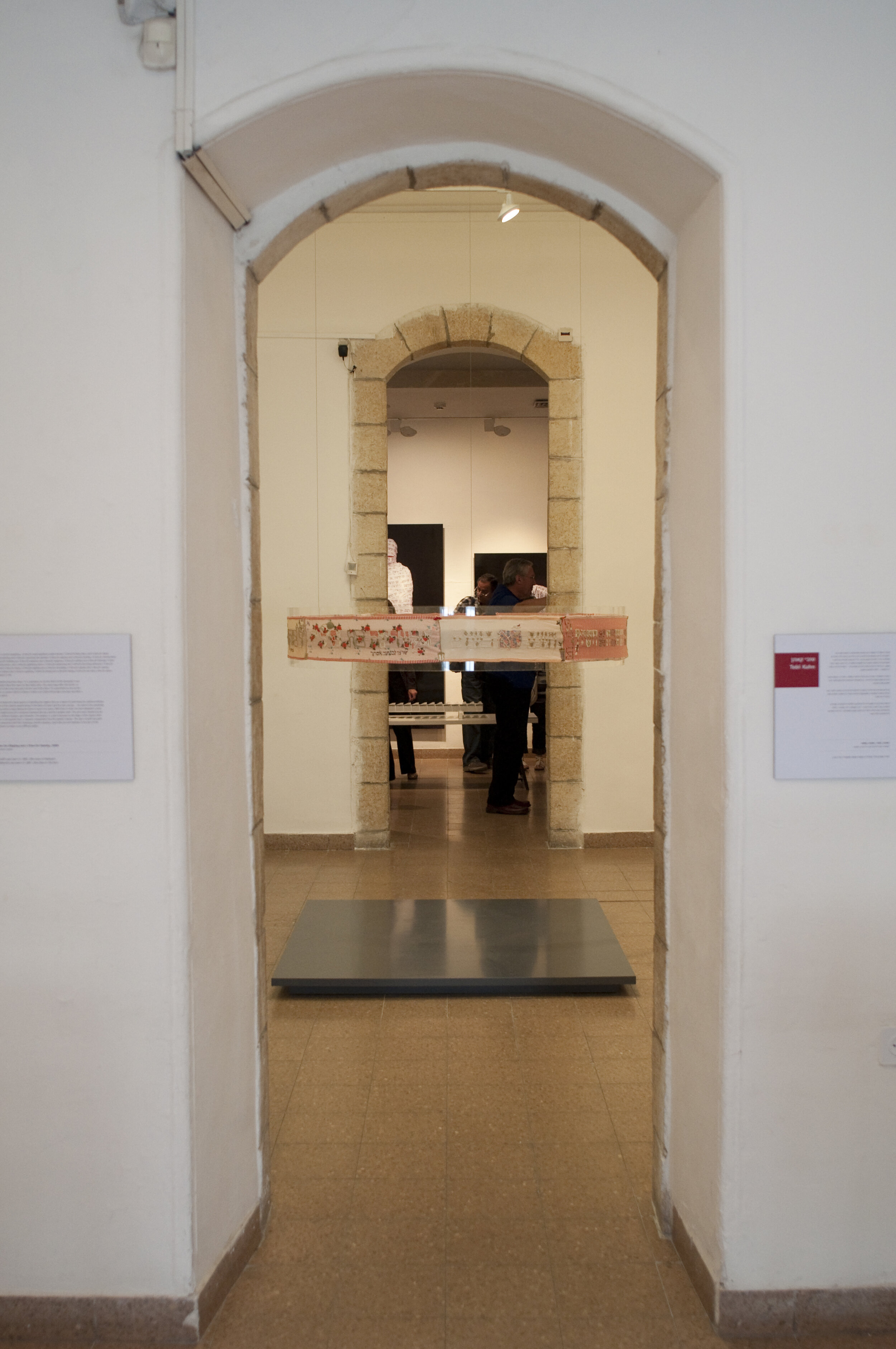
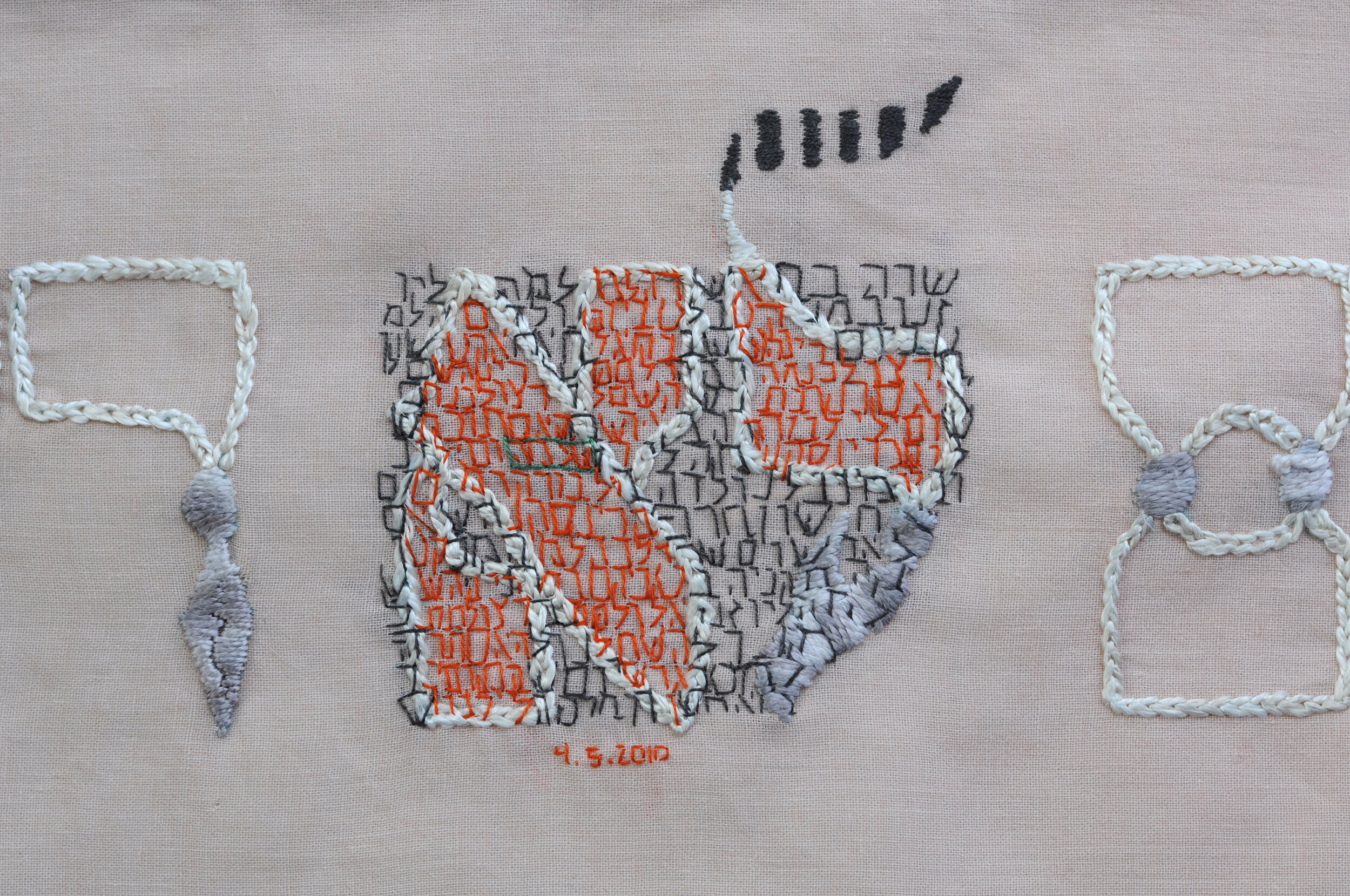
2011
Silk and rayon hand embroidery on found cloth, 127 X 7.2 inches
My grandmother, Sarah Maximovsky, known as Sonya, received her identification document upon arrival to Israel in 1990. Due to a mistake in the registers of the Ministry of Immigrant Absorption, the space for “nationality” was printed with the words “not registered”. Henceforth, Sarah, a surgeon who chose not changing her name during the “Doctors plot” in the end of Stalin’s era in Leningrad, has become an unidentifiable agent in terms of national belonging.
I received my ID in 1993, reaching the age of sixteen. Due to a mistake in the registers of the Ministry of Interior Affairs, the year of my birth was printed as 00. Henceforth a doubt is imposed on my being in the world.
In 1997 I wanted to marry. The rabbinic council asked to verify my Jewish descent. I showed my ID, which stated in the space of nationality: Jewish. Not convinced, they demanded to speak with my grandmother. They called her and asked in Russian: “Is your name Sarah?” “Yes”, - she replied. “Have you always been Sarah or have you just become Sarah?” Sarah, who due to her age had hearing deficiency and was anxious for not answering adequately, replied: “What? Ahhh... Yes, I have always been Sarah.” They then asked her to speak Yiddish, and she spoke as good as she could remember. Thereupon it was decided that I am Jewish.
In German lands of Ashkenaz there used to be a tradition: after the circumcision, the mother of the newborn took his swaddling band and embroidered it with his name, birth date and a blessing, adding decorations according to her taste and ability. The band has been donated to the local synagogue to be used as a Torah scroll binder. In this way the birthday of a male child has been documented and the covenant between the almighty and the people of Israel, commemorated in a mundane cloth, regenerated in the familial memory.
Never a girl in Ashkenaz has received a binder.
This binder is meant for my grandmother and myself. My embroidery is modeled on a binder from 1836, using my own old diaper cloths, made of printed cotton. Turned into pillowcases, they’ve served our family for over thirty five years and travelled with us from Russia to Israel in 1989, where they were nearly downgraded to dust cloths. I collected every piece, along with our old Soviet bedlinen. Together with my mother I have embroidered modified traditional inscriptions referring to mine and my grandmothers' names and dates of birth. In needle and thread I learned to write anew; each letter upon its shape came as if unfamiliar. The fragmented story unrolls as a patchwork, integrating tearing apart and sewing together.
The embroidered inscription*:
שרה המכונה סוניה בת שלמה ליוזנוב מנבל נולדה במ"ט ביום שבת א' חשון תרפ לפ"ק השם לא רשום
אקטרינה שרצו לכנותה אסתר בת וסילי לבורקו מברינסק נולדה במ"ט ביום ב' ח' אלול 00 השם לא רשם
Sarah called Sonya, daughter of Shlomo Lioznov from Nevel born under a good constellation on Sabbath 1st Heshvan 5680 by abbreviated era the name [god] is not written [stated]
Akaterina, whom they wanted to name Esther, daughter of Vasily Lavorko from Briansk, born under a good constellation on Monday 8 Elul zero zero the name [god] did not write [register]
* Words in square brackets are alternative meanings of the ambivalent Hebrew terms
Artist talk as part of “Threads Laid Bare” exhibition at the Anderson Gallery, Drake University, Des Moines, IA.
